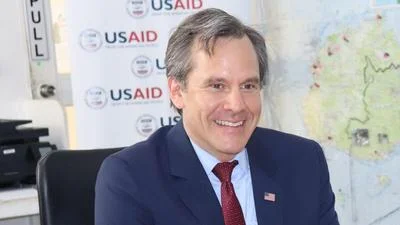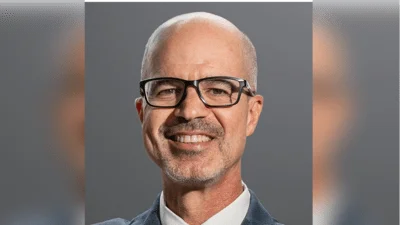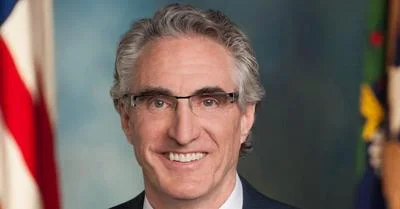The Congressional Record is a unique source of public documentation. It started in 1873, documenting nearly all the major and minor policies being discussed and debated.
“THE NEED FOR ISTEA” mentioning the U.S. Dept of State was published in the Senate section on pages S704-S706 on Feb. 12, 1998.
The publication is reproduced in full below:
THE NEED FOR ISTEA
Mr. BAUCUS. Mr. President, I rise today, along with my colleagues, to urge the Senate to begin the debate on the ISTEA reauthorization bill.
That is important for a number of reasons, that I will get to in a moment. But first let me comment on why we find ourselves in this position.
As my colleagues know, the current ISTEA legislation expired on September 30th of last year.
The Environment and Public Works Committee, under the leadership of our chairman Senator Chafee and our subcommittee chairman Senator Warner, reported the 6-year reauthorization bill on October 1.
About that same time, the House Transportation and Infrastructure Committee reported a stop gap 6-month extension. Unfortunately, as we all recall, the Senate bill got caught up in an unrelated debate over campaign finance reform.
So, regrettably, last session ended with the Congress--both House and Senate--unable to complete action on a long-term bill to reauthorize this important legislation. The best we could do was to extend the funding until May 1 of this year.
Now, there is plenty of blame to go around for this unfortunate situation. Whether it was the failure to invoke cloture, or the filling of the amendment tree, which prevented Senators from offering amendments, there were lots of reasons for our failure last year.
But that was then, and this is now. And the plain fact is that pointing fingers at one another about what did, or did not, happen last year will not help us move a reauthorization bill this year.
So let us stop blaming one another for last year and let us start figuring out how to get the ISTEA legislation reauthorized quickly this year.
Now, Mr. President, let me talk about why we need to move quickly with ISTEA. The simple fact is that without quick action, highway projects, safety programs, and transit projects will begin to lose the ability to meet our country's transportation needs.
Already State highway officials tell us that they are beginning to delay projects. Why should this be so?
Why are States slowing down, or stopping, some projects--even though there are still 42 days of funding left until the May 1st deadline?
The reason is that most highway projects take a long time to complete. It is not unusual for even relatively simple projects to take three, four or five years to finish. Sometimes even more. And complicated or controversial projects, such as the Central Artery in Boston, can take a decade or two to go from conception to completion.
In the highway business, you don't start a project unless you know you will have the funds to complete it.
After all, these projects cannot be turned on and turned off like a faucet. Doing so wreaks havoc on the construction itself, on the neighborhood, on traffic congestion, and so on.
Because these projects extend over many years, they require a certainty in funding that extends over a comparable period. That is why highway bills need to last for several years. ISTEA ran for 6 years. The Senate-reported bill also lasts for 6 years. This time provides a good sense of stability to the financing of projects and allows states and communities to plan their transportation programs efficiently.
But a short-term extension gives you uncertainty, not stability. Especially for large projects, if states cannot assure that Federal matching funds will be available to finish it, they won't even start it. So they delay projects, even if there may be a few weeks of funding left.
At the end of my remarks, I will list a few of the States that are beginning to delay projects. I hope my colleagues will pay close attention to it. Because the longer we delay a reauthorization bill, the longer this list will grow.
Now, let me talk for a few minutes about how the highway program works on the ground. And the process I will describe is essentially the same in every State.
Each project normally has three distinct stages--planning, development, and construction. Each stage can last from weeks to years, depending on the specific project. The charts I have here today focus on the project development stage, that is, the process of taking a project proposed by local government and getting it ready for construction.
As my colleagues can see, it is not simple. A highway project goes through a very complicated process.
The chart on my right shows the first phase--the ``survey phase''.
This is the part of a project where State Departments of Transportation do such things as prepare for public hearings; begin to draft environmental documents; collect soil samples; begin preliminary engineering; assess traffic noise impacts; begin subsurface utility relocation; and assess wetlands and water quality impacts.
The second chart, on my left, shows the ``design phase''. Here, States must prepare the design documents for a project. These documents include traffic access plans; wetland mitigation plans; review of soil samples for hazardous materials; and applications for water quality permits.
Of course, it also includes preparation of final construction drawings, route alignments, schedules of materials, and the like.
The third chart covers the ``right-of-way'' phase. In this phase, States prepare the final environmental documents; determine where rights-of-way must be acquired; determine utility relocations; determine final traffic access controls; obtain wetlands permits; and review all of the documents from the previous design phase.
And as I said before, all this must be done before one shovelfull of dirt is turned.
Now, Mr. President, I explain this process to my colleagues so that they can begin to understand the complicated nature of the highway program. Every project in every State must go through this type of process. In Montana, we have over 450 projects going through it. In States with larger transportation budgets, there can be as many as 1,500 projects in the pipeline.
No project can be ready to go to construction if it has been held up at any point in the development process. And States will not obligate funds to prepare a project for construction if they are uncertain they will actually be able to construct it at some point.
For some projects that are large and complicated, the project development process can be longer than others. But the typical development time for a major construction project can range from five to seven years. That is, it can take five to seven years for a project to reach the point that it is ready for construction.
Once a project is ready for construction, States must still advertise the project--which can take 3 to 4 weeks. Then States must receive bids, open the bids and award the contracts. That can take an additional 4 weeks. And workers, equipment and materials must be mobilized and brought to the construction site. More time.
Finally, there is the time spent on actual construction.
With such a complicated, time consuming process, it is important that Members of the Senate understand that even brief interruptions during project development can cascade into lengthy delays in construction.
That is why the ISTEA bill runs for six years, to give the States some assurance they will not face wasteful delays and disruptions caused by funding uncertainties. That is also why a short-term extension, or worse, a series of short term extensions, is so disruptive.
I have heard many Members ask ``what does it matter if we wait until late March or April to do this bill?''. I hope that once Members and staff become more familiar with this program, that will be a simple answer.
If we wait to begin the debate until ``later'', this bill will not be done by the May 1st deadline. That means more projects will be delayed. It means thousands of workers will lose jobs. And I am afraid that such job losses will begin to happen soon.
I have heard of one contractor who plans to lay off his construction workers on May 1st and will not rehire them until at least 30 days after the final conference report is agreed to.
That same contractor will not be placing any orders with his suppliers until 45 to 60 days after a new bill is in place because he is uncertain he will have construction contracts to work on. And I am confident there are more contractors throughout the country making the same business decision.
Mr. President, the hardworking Americans who lose their jobs because of these delays will do so through no fault of their own. These folks will be ready to show up for work every day and do a good job. And yet they will be told they must find other work because Congress couldn't resolve its differences and get the ISTEA bill reauthorized in time.
Every State will feel this pain. Yes, some will hurt more than others. But every State will have to delay projects.
As I mentioned earlier in my remarks, some States have already listed the projects that will most likely be delayed if a reauthorization bill is not signed into law by May 1st. These are real projects.
These are projects that communities were counting on. These are projects that are important for the safety and mobility of drivers and pedestrians and to relieve congestion in these States.
The States that have already made plans to delay projects include: Kentucky, South Dakota, Maine, Wyoming, Georgia, Nevada, Texas, Missouri, Oklahoma, Indiana, New Hampshire, Indiana, North Dakota and Utah.
More States are expected to announce their plans soon.
Mr. President, let's not treat the reauthorization of ISTEA as a political football. The consequences for all of our States are very real. For those Senators who doubt the impacts, I simply ask that they call their State Department of Transportation. Ask them what they plan to do in the coming weeks. I can assure you that it will not be good news.
So we have a very important job to do--to reauthorize ISTEA. Let's get to it.
I stand ready to work with the Majority Leader, with Senator Daschle, with my committee leadership, with Senators Byrd and Gramm, with the Budget Committee and all my colleagues to find a way to bring this bill up as soon as possible.
Mr. BYRD. Will the Senator yield?
Mr. BAUCUS. I am happy to yield to the Senator.
Mr. BYRD. I thank the distinguished Senator for his remarks on this very important subject. I sat and listened to them. I found them to be very illuminating, very interesting, very informative and refreshing.
I have been around a good many years. I didn't realize all of the steps, the lengthy process, the consumption of time that is required from the alpha to the omega of planning and completing the highway. This has been most edifying to me as I have listened. I thank the Senator.
I recommend to all Senators that they read in the Congressional Record the statement that has been made today by Senator Baucus. He sits on the authorizing committee, and he has had an opportunity because of the jurisdiction of that committee over highways, he has invested many years in the study of this subject matter, and it is a real privilege to have him part of the Senate. I thank him for imparting to me, and I am glad I took the time and sat here and listened to him.
This vast knowledge--I am sure he could speak all afternoon on this subject without notes. I thank him. His comments have been very helpful. I hope all Senators will read these remarks in the Record and that Senators will join in cosponsoring the Byrd-Gramm-Baucus-Warner amendment.
If the Senator will allow me 10 more seconds, I ask unanimous consent that the following three Senators be added as cosponsors to the Byrd-
Gramm-Baucus-Warner amendment numbered 1397 to the bill S. 1173, the Intermodal Surface Transportation Efficiency Act of 1997: Senator Dodd, Senator Bingaman, Senator Thurmond.
The PRESIDING OFFICER. Without objection, it is so ordered.
Mr. BYRD. I thank the distinguished Senator.
Mr. BAUCUS. I thank my good friend from West Virginia. Nobody has worked harder on this issue than he. We all owe him a tremendous debt of gratitude for his very fine work.
I yield the floor and I suggest the absence of a quorum.
The PRESIDING OFFICER. The clerk will call the roll.
The bill clerk proceeded to call the roll.
Mr. McCONNELL. Mr. President, I ask unanimous consent that the order for the quorum call be rescinded.
The PRESIDING OFFICER. Without objection, it is so ordered.
____________________








